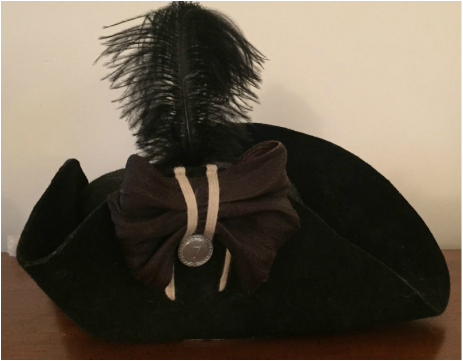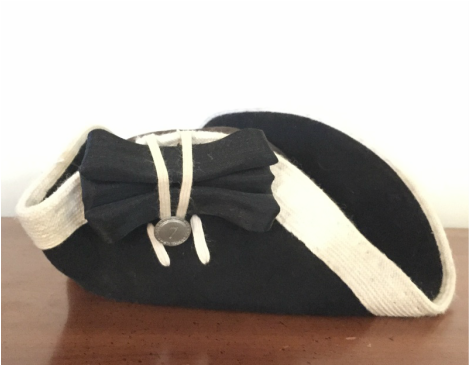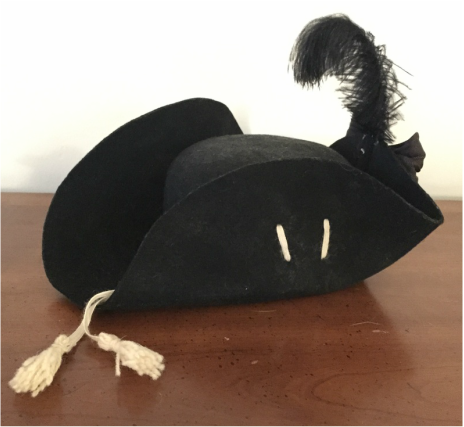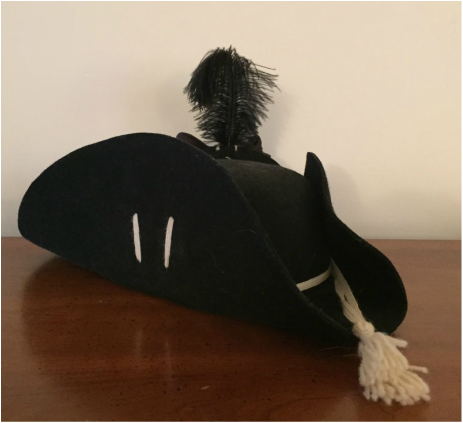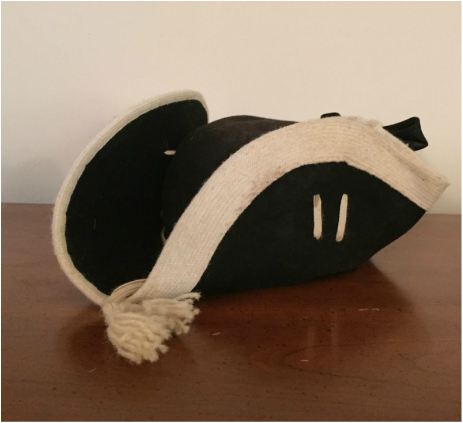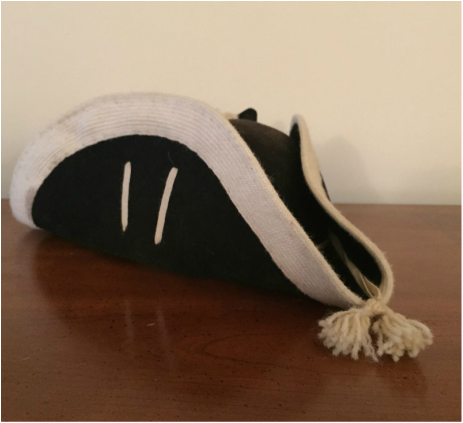Cocked Hats
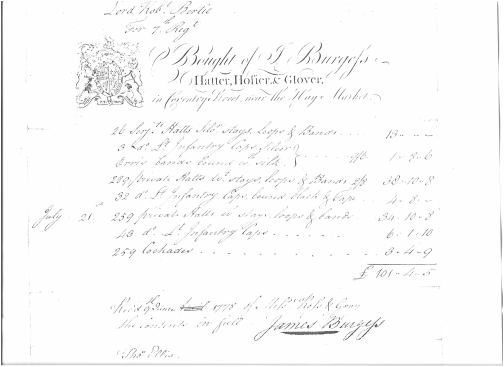
The Royal Fusiliers, as a fusilier regiment, wore bearskin caps as part of their dress uniforms. These caps were very expensive and as a result were only used for parades and other formal occasions. The regiment wore unlaced cocked hats for most duties from 1768 until at least 1784 when the regiment was back in England. Yearly purchase records survive for the regiment's cocked hats. For instance, the 1777 order from the London hatter James Burgess details "white stays, loops, & Bands." at 2/8 each for private's hats.
There were two distinct styles of hats worn by the 7th. From the time the regiment arrived in Canada in 1773 until some point in 1779, the hats had white cocking loops, white bands holding securing horsehair cockades, and a white band with tassels. There was not lace binding the edge of the hat. This seems to have been a common distinction of formations who typically wore some form of bearskin cap as formal wear, such as fusiliers and grenadiers.
Based on a 1779 courts martial of a deserter, we know that white lace was added to the cocked hats by that year. This forms the bases for the second pattern of hat worn by the regiment. This style is interpreted as having been worn from 1779 through the end of the rebellion.
The reproduction hats have round blocked crowns, as did original hats. The brim is cut with a 5 inch rear leaf, 4 inch gutters, 4.5 inch front peaks and 4 inch cock, or point. The hats are then cocked and shaped to match a number of period images.
There were two distinct styles of hats worn by the 7th. From the time the regiment arrived in Canada in 1773 until some point in 1779, the hats had white cocking loops, white bands holding securing horsehair cockades, and a white band with tassels. There was not lace binding the edge of the hat. This seems to have been a common distinction of formations who typically wore some form of bearskin cap as formal wear, such as fusiliers and grenadiers.
Based on a 1779 courts martial of a deserter, we know that white lace was added to the cocked hats by that year. This forms the bases for the second pattern of hat worn by the regiment. This style is interpreted as having been worn from 1779 through the end of the rebellion.
The reproduction hats have round blocked crowns, as did original hats. The brim is cut with a 5 inch rear leaf, 4 inch gutters, 4.5 inch front peaks and 4 inch cock, or point. The hats are then cocked and shaped to match a number of period images.
